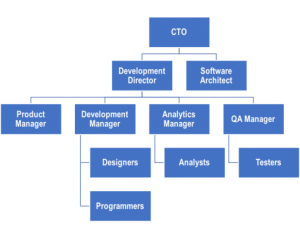
Learn about the building blocks of resilient teams and how geographically distributed teams can help combat the times of unrest
Real digital transformation is built on a foundation of adaptability and the ability to embrace change. As we all face new challenges, we offer this guide as a way to look deeply at your distributed work that is occurring and evaluate where and how it might be improved.
Distributed work can help us to create more resilient teams and help mitigate the impact of substantial upheavals whether they are market-driven or the result of events that happen in the outside world (geo-political unrest, war, disease, etc), or a combination.
Software Development with Distributed Teams
A major part of this potential resilience is effective distributed development teams and taking advantage of the core business value of distributing to multiple locations/geographies. Here are those key benefits of distributed development teams:
- Availability of Deeper Skills – effective use of distributed teams gives you access to a significantly increased talent pool. You can take advantage of developers in one geography and AI specialists in another. If there is a geographic pool of talent, effective geographic distribution allows you to tie into the talent without fear of loss of productivity.
- Increased Velocity – by using developers across multiple time zones you can increase the daily velocity of a team and deliver more value sooner. Effective team distribution also allows you to fill gaps more quickly, use on demand resources better, and leverage team members who may wish to work from home regularly or for a specific period.
- Lower Development Costs – by finding the right partner in the right places you can build up your team with high value resources at lower prices, thereby delivering more and better customer value at the same price tag.
- Protect Against Disruption – having team members in distributed locations, and with the ability to work from other remote locations (home or office) allows you the greatest team elasticity and keeps people working and productive.
It is worth noting that all distributed development teams are not created equal. Teams that have a high degree of density in remote locations may not fare as well when put under stress.
Building Resilient Teams
Here are a few more things to look for when considering a partner or moving into this space on your own:
- Team Distribution – beyond mere geographic distribution, how well do your teams work if they are distributed in multiple locations? Can you get specialists from a geography quickly and onboard them onto a team whose main contingent is elsewhere?
- Work from Home – can your team work from their homes? Will this distribution impact team norms or processes? How well is this contingency planned for?
- Company Culture – do teams embrace distributed culture and the opportunities it provides, or do they still prefer to work in the same location?
- Certifications and Standards: certifications such as ISO 27001 standardize how organizations operate. If distributed execution principles are built into the company’s standards, all the better. These codified processes allow them to function in a distributed fashion more cleanly and with fewer question marks that team members themselves need to resolve.
- The playbook is in place and IT and teams can execute that playbook. You can also worry less about data, code, and environments knowing that these certifications very often govern how teams handle these items.
- Mature Development Processes – does your vendor have a mature, documented development process with enough flexibility to handle your specific needs? If they do, they will be better able to handle the distributed model.
- Cloud-Based DevOps – look for a vendor that utilizes cloud development and cloud-based infrastructure for much of their work, including DevOps best practices. This type of maturity means that systems and source code can easily be protected, mirrored, and backed-up across multiple geographies. It also means that code and test systems are less likely to be hosted in local, insecure data centers or server rooms that might be more likely to suffer an outage in the event of a localized issue.
- Tool Use – use of work-management systems like Jira and standardized workflows ensure that work is tracked and Scrum Masters (and you) have clear visibility into the health of development. By ensuring that requirements, designs, work processes, and task assignments are the same on every project and that none of these things rely on physical co-location of teams, a truly distributed team is equipped to meet distributed development challenges.
- Video and Real-Time Communication Come Standard – every distributed team should use these tools to communicate among themselves and with their clients. They should not miss a beat – and they should know how to make remote meetings feel more like face-to-face meetings.
If you are looking for a digital transformation partner, look for one that has resilience built into its work processes and culture. Even if a vendor has teams physically located in the same place they should adhere to the processes and guidelines listed above. If they do, suddenly working from home and being not physically located together does not pose an issue, nor will it negatively impact performance or communication.
Business & Finance Articles on Business 2 Community
(44)








